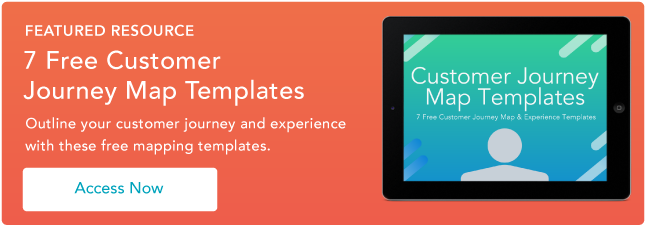Plus, geographic segmentation can increase profits and sustain growth.
By understanding the needs and behaviors of different regions, businesses can create more effective marketing campaigns and build stronger relationships with their customers.
Learn more about geographic segmentation below.
Table of Contents
- What is geographic segmentation?
- Benefits of Geographic Segmentation
- Advantages of Geographic Segmentation
- Geographic Variables
- Geographic Segmentation Example
What is geographic segmentation?
Like other types of segmentation, geographic segmentation organizes your audience into different groups. The groups are based on physical location, like a specific country or postal code.
Why?
Well, people in certain areas follow certain trends. For example, the residents of a particular city might buy much more fresh fruit than a neighboring city.
Geographic segmentation can help you figure out those trends so you can focus your marketing efforts in the right places.
Benefits of Geographic Segmentation
Segmentation doesn't just bolster your marketing — it's more necessary than ever these days. Other than dividing your audience by location, why should you care about geographic segmentation?
Geographic segmentation can save you money. Think about it: You can spend endless amounts trying to promote your offers.
With the right segmentation, you're marketing the right offers to the right people — people who want and need what you're selling.
Effective geographic segmentation can also make and keep your business relevant.
If you market to the right segments, people will keep buying your products or services. If they keep buying, they're more likely to recommend your business to others.
You can also use geographic segmentation to innovate your product. For example, a certain flavor or style may be prevalent in a certain area. If you make a version of your product with this specification, you can increase sales.
Finally, geographic segmentation can be easier than other types of segmentation. Since the information is concrete, measurement and analysis are much more straightforward.
Advantages of Geographic Segmentation
Your budget dictates your marketing strategy, for better or worse. So, with a specific budget, how can you make sure your marketing results in sales?
Well, geographic segmentation is a great choice — especially compared to something like psychographic segmentation.
Here are a few reasons geographic segmentation might end up on your to-do list.
1. You can accelerate growth.
More sales are great, but sustained growth is even better. Geographic segmentation can help with both.
Update your segments regularly, and you should be able to keep targeting the right groups. Keep that up, and your business is almost guaranteed to keep growing.
2. You can organize your marketing efforts.
Scalability is one of geographic segmentation's greatest strengths. While you can zoom out and create large segments, you can also zoom in and target more specific groups.
You can even target based on keywords that can help you select a particular group without spending a fortune on marketing.
3. You can improve communication.
As you probably know, every group — and every customer, for that matter — has unique needs and habits. That's where geographic segmentation comes in.
With the right segments, you can focus more on how specific groups of people communicate and do business. That's invaluable if you want to do business with them.
4. You can boost profits.
Want your business to make more money? Start targeting your audience with geographic segmentation, then create specific marketing campaigns for each group.
If you do this right, you should be able to make more profit and cut down on your time and money spent.
Geographic Variables
The world is a big place. That can make geographic segmentation seem intimidating, but it doesn't have to be.
See, all the geographic variables let you create segments based on the information you can get. Let's look at a few of these variables and how you can use them.
Location
This is probably what comes to mind when most people hear "geographic segmentation." You can segment on a local level all the way to a global level, depending on your needs.
Small Area (Neighborhood)
Think about the last few times you Googled something. Remember the top few results on the first page? Chances are some of those ads were locally relevant to you.
You can target specific communities and areas with your marketing in the same way.
Large Area (Continent)
Have you heard of Cadbury Eggs? They're chocolate eggs that contain toys inside. Eggs with toys inside are banned in the U.S. So it wouldn't make much sense to see a Cadbury Egg commercial in the states.
Without proper geographic segmentation, those ads might run in the wrong market, which would be a waste of money and time.
Climate
Segmenting based on climate has to do with weather conditions. Think about it: Packing the same clothes for Hawaii and Montana wouldn't make sense.
People have specific needs and wants depending on their climate, so always be aware of the weather in any market.
Warm Climates
Let's say you sell sunscreen for this example. You probably wouldn't send most of your stock to Iceland, but mistakes happen. Instead, you'd have the most success selling sunscreen somewhere like California or anywhere else with beaches.
Segmenting based on climate can help you match the right products to the proper weather.
Cold Climates
Imagine you went on a ski trip and forgot to bring a nice shirt to wear to dinner. What would you think if you went to a shop in the ski lodge and only saw short-sleeved shirts?
Well, with the right segmentation, the shop would likely have cold-weather clothing. That's why geographic segmentation is important, even regarding weather.
Population Density
Let's say you found the perfect way to segment your audience, and you want to hone in on a certain group. Now, what if this group, the one you thought would buy everything you had, bought at a low rate?
That might have to do with the population's density. Here's how population density can affect your operation.
Urban
Think about how the average person lives in an urban environment. They buy things more frequently, tend to have more money, and often care more about what's "cool."
An urban environment dictates many behaviors and habits, so make sure your offer fits the lifestyle of your target audience.
Rural
A rural environment probably isn't the best place to debut a new sports car or open a luxury fashion store.
You'll need to adjust your offerings accordingly. Keep this in mind as you segment, and don't push offers that might make a specific audience think you're out of touch.
Culture
Pure geographic segmentation can tell you a lot, but it can't account for everything. Different cultures have different products and preferences.
To assess how your offering will be perceived by different cultures, you'll need to get in touch with a diverse group of users.
Consider holding a focus group or sending a survey to your cross-cultural users. This allows you to gain insight from insiders.
Ethnicity
Alcohol consumption is banned in Saudi Arabia. That's not to say nobody drinks, but an alcohol band won't have a place in the market there. So, if you own a distillery, you'll see a greater ROI by focusing your operation elsewhere.
Cultural segmentation can make this easier to see, as other places might have similar standards and laws based on demographics.
Language
Let's go to French Canada for this example, specifically Quebec. There, you'll find a large population of French-speaking Canadians.
Proper geographic segmentation could help you decide if you should translate your product labels to French before selling there.
Geographic Segmentation Example: Haribo Gummy Bears
Geographic segmentation sounds simple, and it can be. But if you really want to get your message in front of the right people, you might have to dig a little deeper to create your segments.
Haribo is one of the biggest candy brands in the world. Based in Germany, Haribo produces most of its candy in the U.K. — but not all of it. Being an international brand, Haribo has to cater to many specific groups with different needs.
One of those groups is the population of Turkey, which is majority Muslim. That population requires food to be halal, including candy. This means no pork is allowed, and Haribo typically uses pork gelatin in its products.
So what does Haribo do? It produces candies with beef gelatin specifically for the majority-Muslim country of Turkey.
Why The Campaign Works
Changing ingredients allows Haribo to tap a huge population in a new geography. Dutiful market research unlocked a segment that has needs separate from their other consumers.
Without adjusting its product, Haribo would risk not only losing out on sales but also being seen as a company that lacks knowledge about its customers.
Geographic Segmentation and Your Business
Geographic segmentation is a crucial aspect of effective marketing.
By focusing on regional trends, you can tailor your campaigns to specific groups and increase the likelihood of reaching potential customers.
Using variables such as location, climate, and population density can give you a deeper understanding of your audience, leading to improved communication and increased profits.
Keep in mind that geographic segmentation can be a straightforward and cost-effective approach compared to other types of segmentation.
By regularly updating your segments, you can ensure sustained growth and scalability for your business.
Customer Segmentation



![Customer Profiling in 10 Easy Steps [+ Templates]](https://53.fs1.hubspotusercontent-na1.net/hubfs/53/customer-profiling_2.webp)

![How to Get B2B Customer Segmentation Right [+Tips]](https://53.fs1.hubspotusercontent-na1.net/hubfs/53/b2b-customer-segmentation-1-20250109-7176487.webp)




![8 Companies Mastering Customer Segmentation [+ Examples]](https://53.fs1.hubspotusercontent-na1.net/hubfs/53/customer-segmentation-examples_6.webp)

